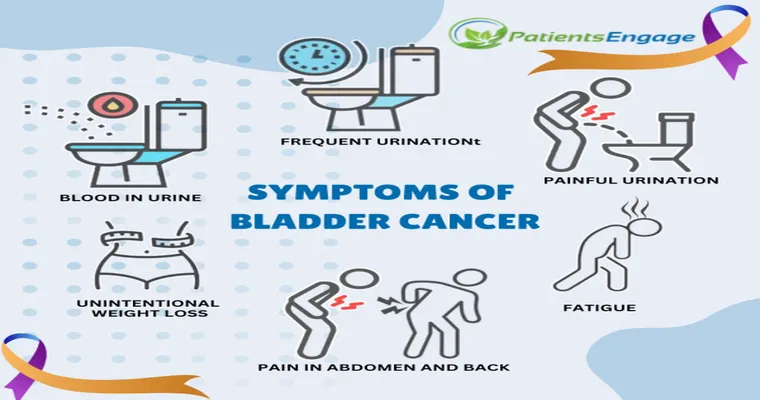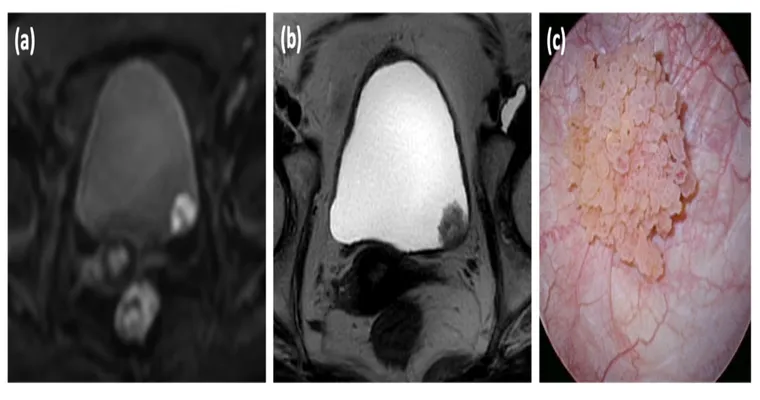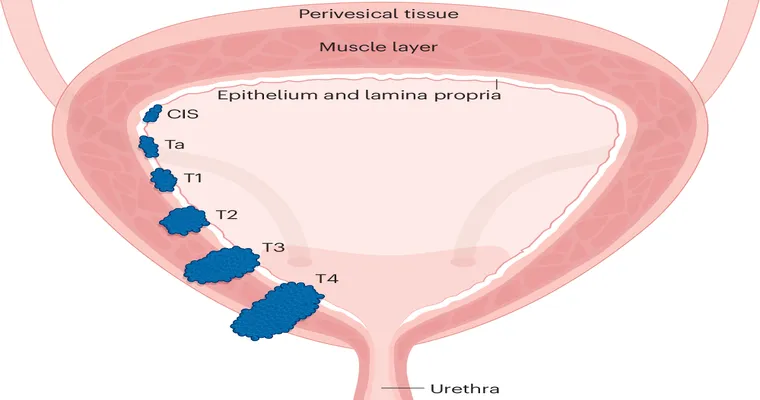Bladder cancer is a serious health condition that affects the urinary system. Understanding the "signs", "symptoms", and "treatments" available for bladder cancer is crucial for early detection and effective management. This article will provide important information to help you recognize the potential indicators of bladder cancer and explore the treatment options available.
Signs and Symptoms of Bladder Cancer
One of the most common and noticeable "symptoms" of bladder cancer is "hematuria", which refers to blood in the urine. This can manifest as bright red blood or a darker, rusty color. Other symptoms may include:
1. "Frequent urination": A person may feel the need to urinate more often than usual, even if only small amounts of urine are produced.
2. "Painful urination": Discomfort or a burning sensation during urination can be a warning sign.
3. "Urinary urgency": A sudden and strong urge to urinate that may be difficult to control.
4. "Back pain": Persistent pain in the lower back or hips that does not seem to be related to other conditions.
If you experience any of these "signs", especially hematuria, it is important to consult a healthcare professional for further evaluation. Early diagnosis increases the chances of successful treatment.
Risk Factors for Bladder Cancer
Several factors can increase the risk of developing bladder cancer. These include:
"Smoking": Tobacco use is the most significant risk factor, as harmful chemicals are absorbed into the bloodstream and filtered through the bladder.
"Chemical exposure": Certain chemicals, especially those used in the dye industry and other manufacturing processes, can contribute to the risk.
"Age": The likelihood of bladder cancer increases with age, particularly in individuals over 55.
"Gender": Men are more likely than women to develop bladder cancer.
"Chronic bladder conditions": Conditions such as chronic cystitis or a history of bladder infections can increase risk.
Diagnosis of Bladder Cancer
If bladder cancer is suspected, several diagnostic tests may be performed. These include:
"Urine tests": To check for the presence of blood or cancer cells.
"Cystoscopy": A procedure where a thin tube with a camera is inserted into the bladder to look for abnormal growths.
"Biopsy": If abnormalities are found during cystoscopy, a small sample of tissue may be taken for further analysis.
"Imaging tests": CT scans or MRIs can help determine the extent of the cancer.
Treatment Options for Bladder Cancer
Treatment for bladder cancer varies based on the stage and grade of the disease. Common treatment options include:
1. "Surgery": This may involve removing the tumor (transurethral resection), part of the bladder, or the entire bladder in more advanced cases.
2. "Chemotherapy": This treatment uses drugs to kill cancer cells and may be used before surgery (neoadjuvant) or after (adjuvant) to reduce the risk of recurrence.
3. "Immunotherapy": A newer approach that helps the immune system recognize and attack cancer cells. It can be effective for certain types and stages of bladder cancer.
4. "Radiation therapy": This may be used in combination with other treatments, particularly for patients who are not surgical candidates.
Conclusion
Bladder cancer can be a challenging diagnosis, but recognizing the "signs" and "symptoms" and understanding the available "treatments" are essential for effective management. If you or someone you know is experiencing symptoms, seeking medical advice as soon as possible is crucial. Early detection significantly improves the chances of successful treatment and better outcomes. Stay informed and proactive about your health.





